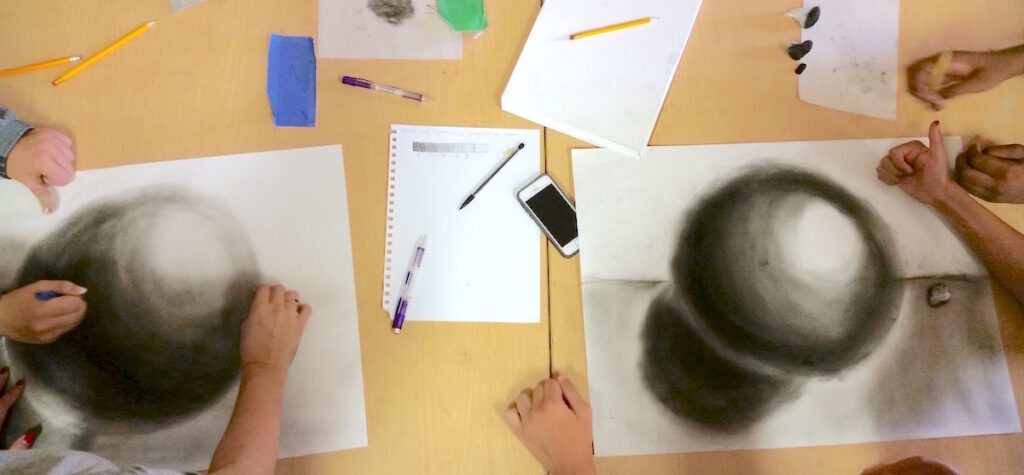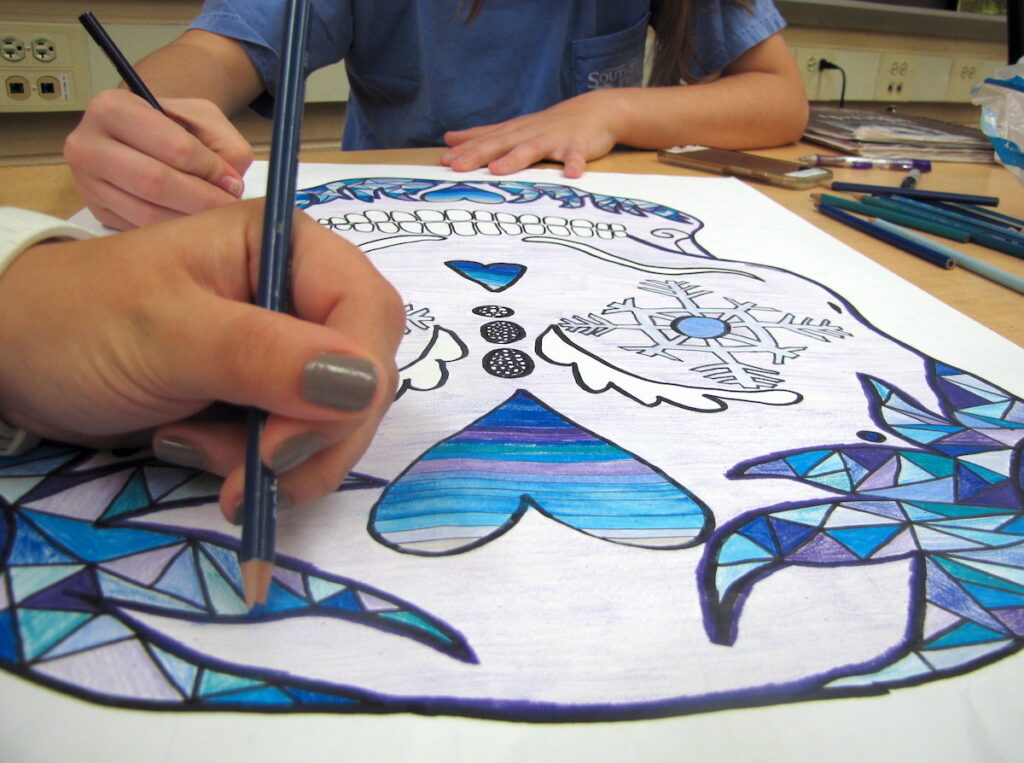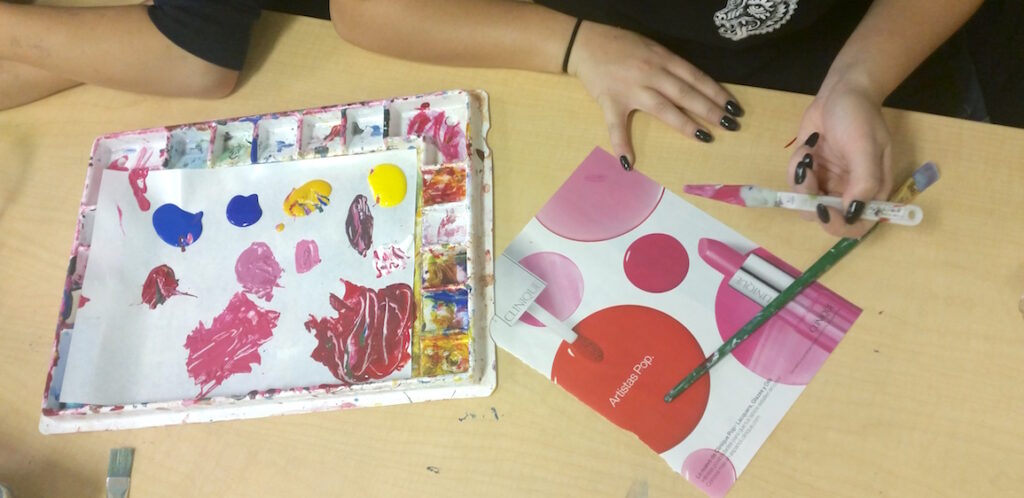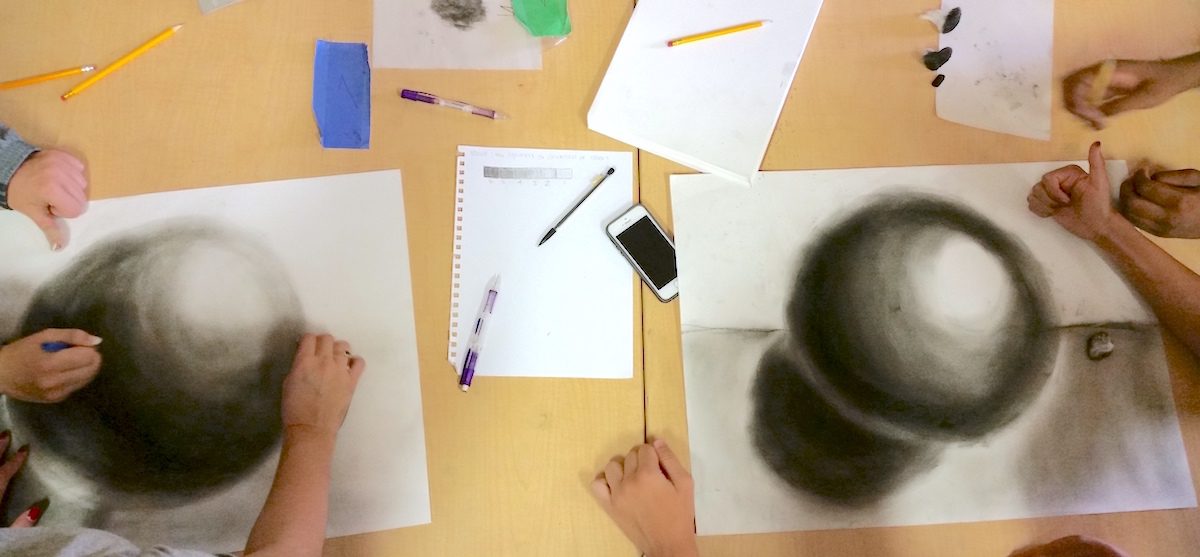Collaborative work is an awesome way to teach and learn. It is currently a popular topic because working with others is an essential skill everyone in the workforce needs. It’s also an important aspect of the art world because so many artists engage in some form of collaboration, from working as part of a design team to partnering with like-minded colleagues to make something spectacular.
In the classroom, collaboration can be used to give students the chance to work large scale, making art that’s bigger and better than it ever could be when made individually. In addition, it provides students the opportunity to experience navigating team dynamics. It can also be used effectively in ways you might not expect, like to teach technique or reflect on new learning.
I love setting up collaborative learning experiences for my students because they result in deeper learning. Although collaboration can lead to the creation of complex, large-scale work, it’s not the only way to work together. Setting up group learning experiences can also be easy to do and actually save you instructional time.
4 Ways to Use Collaboration in the Art Room
1. Group Skill-building Activities
Mastering skills like mixing colors from primaries or creating a range of values with graphite takes time and practice. Skill building is often approached as an individual activity, but it also can be the subject of productive group work. Instead of having kids work on the task alone, set up small groups to work together.
Working through a skill-building exercise with peers will allow students to talk through concepts, practice vocabulary, and have rich conversations, all leading to better and deeper retention of concepts. Struggling students especially benefit from the time reviewing with peers.
To include group skill-building in your room, follow these steps:
- Introduce the skill to be learned by demonstrating.
Place students into groups to try it. To make sure everyone is able and motivated to help, make the task large scale and set a time limit. - Circulate to provide feedback.
Make sure to talk to each group as they work and offer feedback. A critique of group work often feels less personal to students, so this is a great time to give constructive criticism. - Have students present.
Knowing work will be shown builds motivating urgency. Plus, requiring groups to share the work they create helps cap the learning experience through reflection.

2. Public Art
Few things are more engaging than creating artwork out in the open for everyone to see. Public art projects are fun for students and help showcase the amazing work we do to the community. Murals are a common form of public art, but less permanent materials like chalk, sticky notes, tape or even baby powder are great too.
Here are 3 great ideas for public art projects:

3. Games and Challenges
My favorite way to introduce collaboration is with fun. I love one-day games or challenges because they are a great way to introduce concepts in an engaging way. I often start the school year off with a game I use to assess creative thinking and love having kids work in groups to apply new ideas.
Here are some fun games and challenges your students will love:

4. Reflection Activities
Reflection is an important part of the learning experience, (and of teacher evaluation rubrics) but including it in the art classroom can feel like a race against the clock. Quick collaborative activities to share observations about learning are a great solution.
My favorite activity for this is “Think, Pair, Share.”
- Think
First, ask the class a reflective question based on your learning goals for the day. Next, ask them to silently and independently think about it. - Pair
Then ask them to “pair” and find a partner to share their thought with. A quick way to do this is to ask them to share with a “shoulder buddy” – someone who sits on either side of them. - Share
After kids share their reflections, call on a few students to share what they talked about with the entire group.
More Tips for Successful Collaboration
1. Be thoughtful about numbers.
Nothing is worse than a group with too many members. When you are planning group sizes, spend some time thinking about the tasks that will be available to work on. Ideally, each person in the group will have something to do at all times.
2. Mix it up.
One of the best things about working with groups is that it exposes kids to different points of view. Unfortunately, the natural inclination is to stick with friends, so set the expectation early in the school year that kids will be expected to work with everyone.
3. Grade individually.
Group work can be stressful for students when one member isn’t doing their part. I like to grade group projects on participation to encourage everyone to be engaged.
4. Plan easy ways to pick groups.
My favorite method is to cut cards of construction paper. I pick the number of groups I want, then cut cards out of that number of colors. I pass out the cards and students work with the others who received the same color.
Collaboration is a versatile instructional technique with the ability to serve multiple functions in the classroom. However we use collaboration, working in groups teaches our kids the skills needed to communicate effectively and exposes them to multiple perspectives. It also provides the opportunity to practice vocabulary, talk through ideas, and correct misconceptions, all while creating amazing art.
How do you include collaboration in your classroom? Tell us in the comments below!
Magazine articles and podcasts are opinions of professional education contributors and do not necessarily represent the position of the Art of Education University (AOEU) or its academic offerings. Contributors use terms in the way they are most often talked about in the scope of their educational experiences.





